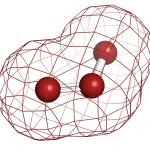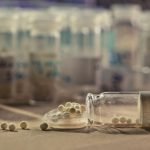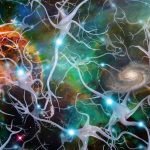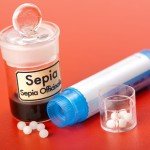Bone Morphogenetic Proteins: Important Therapeutic Molecules for Bone and Joint Health
Arlene B. Donar, ND
Since the discovery of Bone Morphogenetic Proteins (BMPs) as bone-inductive proteins by Urist in 1965, many investigators have shown that BMPs induce stem and mesenchymal cell differentiation into osteogenic cells capable of producing bone. BMPs have been categorized as morphogenetic proteins, molecules that induce the genome to initiate formation of morphogenetic areas. BMPs diffuse via concentration gradient, thereby altering the developmental process. Cells then respond by proliferating and differentiating following a predefined pattern and spatial arrangement. BMPs are proteins secreted by cells, which perform as ligands for receptors present in the plasma membrane of a variety of cells (autocrine and paracrine effects), thereby establishing cell and tissue organization (Granjeiro et al., 2005).
BMPs form a unique group of proteins within the Transforming Growth Factor beta (TGF-b) superfamily of genes and have important roles in the regulation of bone induction, maintenance and repair of both bone and cartilage (Sykaras and Opperman, 2003). They are hydrophobic, low molecular weight polypeptides. BMPs have been observed in nearly all developing visceral and somatic organs, i.e., brain and sympathetic neurons, heart, liver, lung, skin, hair follicles, cranio-sacral structures, placenta and skeletal elements (Urist, 1997). Accordingly, the key signals for bone morphogenesis have been identified (see Figure 1). The BMP as a signaling molecule of the TGF-b superfamily binds to a Type II specific receptor present on the cell membrane and recruits a Type I receptor, forming a complex. These receptors are transmembrane serine/threonine kinase proteins that self-phosphorylate after formation of the BMP-receptor II-receptor I complex and acquire the ability to phosphorylate Smad proteins, a family of TGF-b transducers. Receptor-regulated Smads (R-Smads) interact with common-mediator Smads to form complexes, which then translocate into the nucleus and regulate the transcription of various target genes (Granjeiro et al., 2005). This results in the ultimate expression of several proteins necessary for bone formation and growth of cartilage (Ducy et al., 1997), leading to an expression of the critical genes involved in osteoblast and chondrocyte formation.
During cell differentiation of both chondrocytes and osteocytes, cells aggregate and proliferate in condensation centers. BMP concentration gradients arise in condensation centers. BMPs are expressed in bone generation, regeneration, modeling and remodeling of cartilage and bone, including ligament and tendon connective tissue insertions (Urist, 1997). In mesenchymal and embryonic cells, the most impressive effect of BMPs is the ability to induce differentiation of these cells into osteoblasts, stimulating cartilage formation and alkaline phosphatase activity. Other hormones or cytokines cannot modulate the level of these markers of bone metabolism. Osteoblasts treated with rhBMP-2 demonstrated rapid differentiation, similarly to mesenchymal cells with an increase in the levels of alkaline phosphatase, osteocalcin, osteopontin and bone sialoprotein (Granjeiro et al., 2005). The focus on BMPs is based on the idea that the stimulation process will in turn lead to the downstream events involved in osteoblast and chondrocyte differentiation and produce beneficial effects on bone mass and joints (Ducy et al., 1997), leading to innovative therapeutic approaches to the treatment of osteopenia/osteoporosis and joint health.
Bone Health
OP-1, or BMP-7, was cloned in the 1990s. The gene encoding BMP-7 was found in placenta and hippocampus cDNA libraries. BMP-7 promotes an increase in chondrocyte proliferation and induces chondrogenic differentiation as well as cell proliferation, collagen synthesis and osteoblast differentiation (Granjeiro et al., 2005).
BMPs are stored within the bone matrix, allowing their involvement in the modeling/remodeling process by mediating the coupling of osteoblasts and osteoclasts. Because of their osteogenic potential, BMPs are considered important therapeutic agents for healing fractures of bones, preventing osteoporosis, enhancing bone formation and treating periodontic defects (Sykaras and Opperman, 2003). BMP-2 has been identified as a promoter and signal transducer. An Icelandic study recently linked BMP-2 and osteoporosis. A linkage analysis in extended families with osteoporosis found three variants in the BMP-2 gene: a missense polymorphism and two anonymous single-nucleotide polymorphism haplotypes associated with osteoporosis. The association was recorded with a variety of osteoporotic phenotypes, such as osteoporotic fractures and low bone mineral density both before and after menopause. The authors concluded that a region on the short arm of chromosome 20, where the BMP-2 gene is located, contains a gene or genes that appear to present a major risk factor for osteoporosis and osteoporotic fractures. The evidence further supported that BMP-2 is one of the major genes involved in osteoporosis and bone metabolism (Mundy, 2006).
In a 2005 study by Honsawek and Dhitiseith, extractable BMP-4 was analyzed via enzyme linked immunosorbent assay (ELISA) to determine its relationship to the aging process. Sixty-three samples of demineralized bone matrix (DBM) were studied, derived from both men and women ages 15-65 years. They concluded that extractable BMP-4 content appeared to be age dependent, with DBM from younger donors being most likely to have higher BMP-4 quantity. They also determined that DBM with high osteoconductivity contained greater amounts of extractable BMP-4 than samples with low osteoconductivity. They further concluded that BMP-4 in demineralized bone underwent age-related decreases that may contribute to the reduction of bone volume with aging.
Having realized the osteoinductive properties of BMPs and identified their genetic sequences, the FDA has recently approved BMP-7 (OP-1) for the treatment of spinal fusion, emphasizing its use in orthopedic surgeries. This has allowed surgeons to incorporate BMPs into clinical settings as an alternative or adjunct treatment in cases of compromised healing of fractures and for clinical application for fractures of long bones, non-unions and spinal fusion (Gautschi et al., 2007).
Joint Health
Articular cartilage is a key component of synovial joints and one of the few regions in the skeleton where cartilage is maintained into adulthood (Rountree et al., 2004). BMPs have a fundamental role in the lineage, morphogenesis, maintenance and homeostasis of articular cartilage (Reddi, 2006). A recent study by Bobacz et al. (2003) concluded that BMP-6 has the potential to stimulate total proteoglycan (PG) synthesis in human articular chondrocytes derived from normal as well as osteoarthritic (OA) joints. Articular chondrocytes were shown to endogenously express receptors for several members of the BMP family. Polymerase chain reaction (PCR) products of BMP-6 cDNA were detected in all samples tested, providing evidence that BMP-6 mRNA was expressed in human articular cartilage independent of age or presence of OA. BMP-6 increased the biosynthesis of PG independently of underlying OA, indicating the involvement of BMP-6 in adult cartilage homeostasis at the mRNA level as well as at the protein level. BMP-6 and its family of TGF-b was the only factor among many to stimulate chondrocytes in older donors (>55 years) (Bobacz et al., 2003).
Another study found that articular cartilage lacking BMPs (BMP r1a) maintains a very low proliferation rate as well as low levels of proteoglycans. BMP r1a appears to maintain articular cartilage primarily through induction of key extracellular cartilage matrix components (Rountree et al., 2004).
In summary, recent studies have identified the osteoinductive properties of BMPs. As a member of the superfamily of TGF-b, it influences expression of the critical genes involved in osteoblast and chondrocyte formation. BMPs play a significant role at all levels of bone and cartilage development by regulation of bone induction; maintenance and repair of bone and cartilage; bone generation; regeneration; and modeling and remodeling of cartilage and bone, including ligament and tendon connective tissue insertions. In mesenchymal and embryonic cells, the most impressive effect of BMPs is the ability to induce differentiation of these cells into osteoblasts, stimulating cartilage formation and alkaline phosphatase activity. Other hormones or cytokines cannot modulate the level of these markers of bone metabolism. BMPs represent important molecules for the future of bone and joint health, allowing innovative therapeutic approaches to the treatment of osteopenia/osteoporosis, osteoarthritis and overall joint health.
 Arlene B. Donar, ND earned her naturopathic degree from the University of Bridgeport College of Naturopathic Medicine. She is board certified and licensed as an ND in Connecticut. Dr. Donar also holds a Master of Arts degree in speech and language pathology, and has worked as both a private consultant and adjunct professor in speech communications. Dr. Donar is the former medical director of the supplement manufacturer Heartguardian. She maintains a private practice in Manhattan, working primarily with clients with chronic health conditions, and lectures locally on prevention and treatment of disease using botanical medicine and clinical nutrition.
Arlene B. Donar, ND earned her naturopathic degree from the University of Bridgeport College of Naturopathic Medicine. She is board certified and licensed as an ND in Connecticut. Dr. Donar also holds a Master of Arts degree in speech and language pathology, and has worked as both a private consultant and adjunct professor in speech communications. Dr. Donar is the former medical director of the supplement manufacturer Heartguardian. She maintains a private practice in Manhattan, working primarily with clients with chronic health conditions, and lectures locally on prevention and treatment of disease using botanical medicine and clinical nutrition.
References
Granjeiro JM et al: Bone morphogenetic proteins: from structure to clinical use, Braz J Med & Bio Res 38(10):1463-1473, 2005.
Sykaras N, Opperman LA: Bone Morphogenetic Proteins (BMPs): how do they function and what can they offer the clinician?, J Oral Sci Jun; 45(2):57-73, 2003.
Urist MR: Bone morphogenetic protein: the molecularization of skeletal system development, J Bone Miner Res 12(3):343-6, 1997.
Ducy P et al: Osf2/Cbfal: a transcriptional activator of osteoblast differentiation, Cell 89:747-54, 1997.
Mundy GR: Nutritional modulators of bone remodeling during aging, Amer J Clin Nut 83(2):427S-430S, 2006.
Honsawek S, Dhitiseith D: Content of bone morphogenetic protein-4 in human demineralized bone: relationship to donor age and ability to induce new bone formation, J Med Assoc Thai Sep: 88(4): S260-5, 2005.
Gautschi OP et al: Bone morphogenetic proteins in clinical applications, ANZ J Surg 77(8): 626-31, 2007.
Rountree RB et al: BMP receptor signaling is required for postnatal maintenance of articular cartilage, PLos Biol Nov; 2(11): e355, 2004.
Reddi AH: Aging, osteoarthritis and transforming growth factor-beta signaling in cartilage, Arthritis Res Ther 8:101, 2006.
Bobacz K et al: Expression of bone morphogenetic protein 6 in healthy and osteoarthritic human articular chondrocytes and stimulation of matrix synthesis in vitro, Arthritis Rheum 48(9): 2501-08, 2003.










